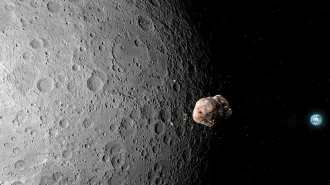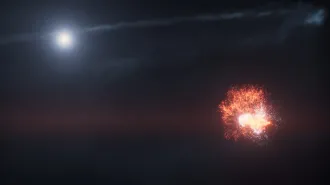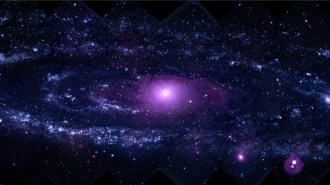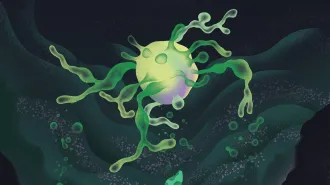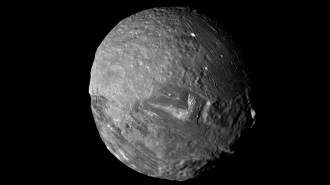Here’s how a collision of star remnants launches a gleaming jet
An enlarged magnetic field plays a crucial role

After two neutron stars of unequal mass merge and form a black hole (center, not visible), an enlarged, twisted magnetic field (pink) causes the celestial body to shoot a bidirectional jet of high energy matter (green arrows), a new simulation shows.
K. Hayashi/Max Planck Institute for Gravitational Physics (Albert Einstein Institute)
